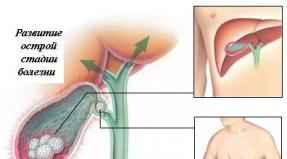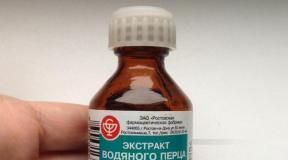Interesting facts about vitamin E. Amazing facts about vitamins and minerals. You didn't know for sure! Vitamin C - water soluble
Many people know a thing or two about vitamin C - for example, that it can be found in orange juice or that a lack of it can lead to scurvy (as in famous sailor stories). However, myths regarding this essential nutrient are still widespread today, although more and more people are gradually learning the truth. What are the most common vitamin C myths? And are they true or fiction?
Hit with vitamin C on a cold will cure you - myth

When a period of illness occurs, many people begin to take in large amounts of vitamin C to prevent illness. Unfortunately, it doesn't do as much of a benefit as many would like. Of course, research shows that people who take vitamin C tend to have a slightly shorter duration of a cold, as well as less severe symptoms, you are unlikely to be able to reduce your risk of getting a cold if you rely on vitamin C. In most cases, this is a reference to a study that showed that half of male athletes reduced their risk of getting a cold by taking vitamin C, but it had no effect on female athletes. It is true that vitamin C is a key component for the functioning of the immune system and also plays an important role in the wound healing process. However, the best way to keep your immune system in good working order is to eat right and not consume huge doses of vitamin C at specific times. Unfortunately, recent studies show that 87 percent of people do not eat the right amount of fruit and do not get the right amount of vitamin C per day. If you get the right amount of it, you can easily keep your immune system in top condition, which will help you prevent colds.
Vitamin C deficiency is rare - fact

The human body cannot produce vitamin C - this makes this nutrient indispensable, that is, a person can get it only from food. But today, vitamin C deficiency, which can cause serious symptoms such as bleeding of the nose and gums, joint pain, rough and dry skin, bruising, is a rather rare case. The recommended intake of vitamin C per day is 75 mg for women and 90 mg for men, although many experts believe this should be increased to 200 mg. One medium orange contains about 70 mg of vitamin C, and scurvy can be avoided even if you consume at least 10 mg of vitamin C per day. In other words, you are unlikely to be at risk for vitamin C deficiency, which of course does not mean that you don't have to strive to get it on a daily basis.
Citrus fruits are the best source of vitamin C - myth

Citrus fruits are undoubtedly an excellent source of vitamin C, but the best source is a vegetable, namely pepper. One cup of chopped fresh vegetable peppers (about the size of a tennis ball) contains 200-300 milligrams of vitamin C, which is 100 milligrams more than a glass of orange juice. Other great sources are broccoli, Brussels sprouts, kiwi, strawberries, papaya, pineapple, and melon. Naturally, citrus fruits are also noteworthy - oranges, tangerines and grapefruits provide you with an impressive dose of vitamin C.
Vitamin C helps with weight loss - fact

Low blood vitamin C levels have already been linked to high BMI (body mass index), higher body fat and waist circumference when compared to people who have normal vitamin C. the body to use fat as a source of energy - both during physical activity and at rest. To take advantage of these wonderful benefits of vitamin C, you need to be active and add foods that are rich in vitamin C to your meals.
Vitamin C cannot be too much - a myth

Your body cannot store vitamin C, so if you consume too much, the excess is destroyed by your kidneys and excreted in urine. Plus, high doses of this vitamin can also cause unpleasant side effects. Vitamin C is one of the nutrients that has a well-defined upper tolerance level, that is, the maximum that you can safely consume, both from food and dietary supplements. This level for vitamin C is 2000 mg per day, and if someone can take that much without any problems, for others it can result in a number of side effects, such as gas and indigestion, diarrhea, nausea and vomiting, heartburn, headaches, insomnia. and even kidney stones. What does it mean? This means that in this case, more is not necessarily better. It will be best here if you use this substance just right.
What diseases does vitamin D prevent, why its level needs to be controlled, what is the daily intake - Marina Syutaeva, columnist at BeautyHack, answers these and other questions.
1) Vitamin D prevents colds and flu
While we believed in the anti-influenza and immunomodulatory properties of vitamin C and threw in ascorbic acid at a dosage of 1000 mg for prevention, scientists in Japan found that vitamin D would be more powerful in this matter. It has been proven that the lower its level in the body, the more often you will catch colds.
2) Vitamin D serves to prevent many diseases
Vitamin D has long been known to prevent osteoporosis by helping the body absorb calcium. But its functions are not limited to this. It is useful for the entire musculoskeletal system: bones, joints, muscles. In addition, it was recently found that vitamin D has an oncoprotective effect (in particular, it prevents skin and breast cancer).
It also serves as the prevention of cardiovascular and autoimmune diseases, stroke, diabetes mellitus, obesity. Plus, with a deficiency of vitamin D, collagen synthesis decreases - and this provokes early wrinkles and ptosis.
3) Vitamin D Treats Depression
.jpg)
Depression in Russia is not for nothing considered a seasonal disease, which manifests itself in autumn, winter and spring, when sunny days are rare. And since the synthesis of vitamin D in the body is under the influence of ultraviolet radiation, the connection between the psycho-emotional state and the level of vitamin D is obvious. Canadian scientists analyzed data from 14 studies with 31,424 participants to confirm this relationship. Therefore, vitamin D is increasingly recommended to be taken for the prevention of depressive conditions, as well as for chronic fatigue syndrome (6 facts about depression and antidepressants can be found out).
4) Vitamin D levels need to be monitored
.jpg)
Once, or better twice a year, take a blood test for vitamin D. In Russia, physicians do not prescribe such an analysis, since it is not on the list of mandatory ones, so either do it for a fee (health is more expensive), or contact an endocrinologist for a referral. The direction should indicate a substance called 25-hydroxyvitamin D3, this form is well detected in blood plasma. The normal level of this substance in an adult is 50-100 ng / ml. Everything else is a deficit.
5) You cannot accumulate vitamin D
In Russia, where the sun does not appear for months, the supply of vitamin D accumulated in the summer is consumed in a couple of months.
It is not worth counting on what will be different for you: only residents of sunny regions can get the optimal level of this vitamin. So sunny that people there can afford to walk down the street wearing short sleeves. A quarter of an hour is enough to get a dose of about 20,000 IU of vitamin D.
6) Daily intake of vitamin D varies from country to country
.jpg)
By the way, there is still no agreement among experts on the daily dose of vitamin D. And while in some countries the optimal dose is considered to be 400 IU for sunny regions and 1000 IU for all others.
7) There are three ways to store vitamin D
Here, in fact, they are:
- exposure to the sun, since vitamin D3 (cholecalciferol) is produced in the skin when exposed to ultraviolet radiation;
- getting with food - this way vitamin D2 (ergocalciferol) will enter the body;
- in the form of dietary supplements.
And here everything is not as simple as it seems. Each method has pros, cons, and pitfalls of each method.
8) You must be careful when storing vitamin D with the help of the sun
.jpg)
According to the German Federal Institute for Risk Assessment, about 60% of the German population is deficient in vitamin D. The Scandinavian countries are also beating alarm bells, and they even advise residents to visit a solarium, and in vain. Because:
a) sunbathing is harmful;
b) in a solarium - all the more harmful, because only UVA rays, provocateurs of wrinkles and skin cancer, work there;
c) the synthesis of vitamin D in the skin takes place only with the participation of UVB rays, which, as already mentioned, are not available in a tanning bed.
Another question: if sunbathing without sun protection is harmful, will SPF cream interfere with the synthesis of vitamin D in the skin? Some scientists say: they will not interfere, it was established in the course of research. To which the opponents answer: most likely, the participants in the experiments applied less cream than necessary, and forgot to update the protection.
The compromise is this:
- apply cream with SPF only on the face, expose the rest of the body to the sun for 10-15 minutes without protection;
- do not use photo protection every day if you live in a region with low solar activity;
- before applying SPF cream, look at the UV index in the weather forecast.
9) Foods Will Not Provide Your Daily Value of Vitamin D
.jpg)
Below is a list of foods that contain vitamin D:
- oily fish (salmon, halibut, cod, tuna, mackerel, herring, eel);
- fish oil and fish by-products (cod and halibut liver, fish milk);
- seaweed;
- wheat germ;
- beef liver;
- egg yolks;
- some types of mushrooms;
- cheese and milk;
- avocado.
In many articles on proper nutrition, experts say that it is quite possible to get vitamin D with food - but in fact it is not.
Even at the risk of dying from gluttony. Indeed, from the entire list, only fish oil will provide a daily dose of vitamin D (we have analyzed the composition of this biological supplement in detail).
The absorption volumes of the remaining products were roughly calculated by the German dermatologist Yael Adler, and the daily diet should look something like this:
- “10 kg of brie cheese or veal liver;
20 liters of whole milk;
600 g of avocado or 1 kg of mushrooms. "
Or a pound of greasy mackerel for breakfast. True, with fish in our time, everything is complicated. More precisely, it is harmful. Because it doesn't matter where it grew - in the wild or on a fish farm - it is a direct supplier of unsafe chemicals and compounds to the body. In particular, mercury. The FDA approved food grade for mercury is 0.25 ppm.
And in some varieties of fish there is so much of it:
Halibut - 0.20 ppm
Frozen tuna - 0.30 ppm
Lobster - 0.30 ppm
Swordfish 1.0 ppm
10) The Best Way To Get Vitamin D Is By Taking Supplements
.jpg)
This is even recommended by the WHO. The dosage and drug should be prescribed by a doctor, so be sure to take an analysis. And then you will have to order the drug on foreign Internet resources such as iHerb. After all, everything that is in Russian pharmacies is solutions with a low dosage. By the way, since vitamin D is fat-soluble, it is better to take it in oil form and in capsules.
Similar materials from the rubric
Now scientists know 13 vitamins. In the past, people suffered from deficiencies of these substances - travelers and sailors suffered from scurvy from a lack of vitamin C, although the treatment was simple - there is a lot of ascorbic acid in fresh vegetables and fruits. Here are some interesting facts about vitamins.
Story
Herodotus suggested using vitamins to treat eye diseases. This historian did not know about the chemical composition of the vitamin, but knew that the substance that cures night blindness is contained in raw liver.
The French traveler J. Cartier got into a difficult situation when about a hundred people in his team fell ill with scurvy. They were cured by local Indians by giving them a tincture of pine needles (it contains a lot of vitamin C). Pine needle tincture was consumed by residents of besieged Leningrad, which helped many residents to avoid scurvy (they insisted not on alcohol, but simply in hot water).
Biochemist N. Lunin was the first to establish the existence of vitamins. He divided the mice into two groups - some he fed with milk protein, fat and milk sugar, these animals died. He fed other rats with milk, they survived. As a result of this experiment, the scientist came to the conclusion that not only fats, carbohydrates and proteins are needed for good nutrition, but also some other substances that still need to be studied.
Polish biochemist Kazimierz Funk in 1911 for the first time isolated vitamin B1 (thiamine). This substance was isolated from rice bran. Having identified thiamine in rice husks, the scientist understood the cause of the disease "Beriberi" (the body accumulates pyruvic acid, which affects the human nervous system), this disease occurred in people who ate refined rice, the researcher learned to treat it with vitamin B1. Later, the scientist learned how to extract vitamin B1 from yeast. This researcher introduced the name "vitamin", as well as the terms "vitamin deficiency" (lack of vitamins) and "hypovitaminosis" (when more vitamins are consumed than enters the body, this condition leads to vitamin deficiency). For the discovery of vitamins, Kazimir Funk received the Nobel Prize.
Vitamin E was isolated in 1922.
Vitamin C was first isolated by the Hungarian scientist Albert Saint-Györgyi in 1928. In 1932, the American scientist Glen King discovered that vitamin C is ascorbic acid and determined the formula of the substance.
In the twentieth century, vitamins have learned to synthesize. Synthetic vitamins have a significant drawback - they negatively affect the functioning of the kidneys, they are also easy to overdose, so you need to be careful with their use.

Health
The human body can accumulate vitamins A, E, D, K (the body can stock up on them for a while). Vitamins C, PP, B do not accumulate.
Vitamins are destroyed during cooking, but if foods are steamed, they retain much more vitamins than foods that are boiled or fried.
In the refrigerator and freezer, vitamins are destroyed, but to a lesser extent than after heat treatment.
Lack of vitamins (vitamin deficiency) leads to scurvy, night blindness (decreased visual acuity in poor lighting), rickets and other diseases.
You need to carefully take multivitamins that contain iron. Excess iron leads to disruption of the liver, heart, pancreas.
Vitamins are a dietary supplement, they cannot be substituted for food, good nutrition is needed for health.
Do not forget that vitamins should be consumed only as directed by a doctor.
Vitamin A
Vitamin A is called retinol:
- discovered in 1931, in 1974 it was synthesized in an artificial way;
- if there are provitamins A in plant foods, they are converted into vitamin A in the human body;
- vitamin A breaks down under the influence of sunlight (it is sensitive to ultraviolet rays), and also breaks down during heat treatment.
If the amount of vitamin A is three times more than the norm, it turns into poison. The liver of a polar bear contains a large amount of vitamin A, one hundred grams of the liver of this animal can be a lethal dose for humans. The Eskimos bury the bear's liver to prevent the dogs from eating it.
A lot of vitamin A is found in carrots and carrot juice. But you cannot consume too much carrot juice, and you also cannot consume carrot juice for a long time, since an excess of vitamin A can negatively affect human health.

Vitamin C
Vitamin C is also called ascorbic acid:
- if you consume too much vitamin C, the temperature may rise, the blood pressure may rise, and the kidneys also suffer from too much of this vitamin;
- lack of vitamin C leads to scurvy - a disease in which the gums swell, teeth fall out, if a person does not receive vitamin C for a long time, he may die;
- a lot is found in apples, currants, citrus fruits, sweet peppers;
- when cooking products, up to 60 percent is lost, when frying and baking, up to 90 percent of this vitamin is lost;
- the body of some animals can synthesize this vitamin, the human body cannot synthesize this substance;
- takes part in protein synthesis, redox processes in the body;
- helps the body get rid of cholesterol;
- improves the elasticity of blood vessels;
- despite the fact that too much vitamin C can harm health, vegetables and fruits can be eaten in unlimited quantities, an overdose can occur only if you use synthetic ascorbic acid.

Vitamin D
Vitamin D (calciferol) is ingested with animal food. Also, this vitamin is formed in the body when exposed to sunlight. This vitamin is soluble in fat, this property allows it to accumulate if you sunbathe in the summer, this vitamin remains in the body until autumn, and possibly until winter.
It takes part in the assimilation of magnesium, phosphorus and calcium, and also helps the body absorb vitamin A. Vitamin D takes part in the work of the heart, bones grow better if the body has this substance.
The most beneficial D vitamins are D2 and D3.

Vitamin E
Vitamin E (tocopherol):
- positively affects the work of the nervous, cardiovascular, endocrine systems;
- reduces the risk of blood clots, as it helps to clear blood vessels;
- has a positive effect on the skin, although in contact directly with the skin (and not with products) it can cause dermatitis;
- it is useful for diabetes.

Vitamin B1
Vitamin B1, also called thiamine:
- helps the heart muscle work;
- has a beneficial effect on the human digestive system;
- helps the nervous system;
- it decomposes almost immediately during heat treatment, therefore, in order to get it, you need to eat raw products (or steamed);
- the substance is found in the heart and liver of a pig, oatmeal, potatoes (it must be steamed), and a lot of vitamin B 1 is also found in legumes;
- recommended for people who eat little fatty foods.

Vitamin B6
Vitamin B6 is also called pyridoxine:
- occupies an important place in the metabolism;
- helps the cardiovascular system to function;
- is responsible for the proper functioning of the endocrine system;
- enhances immunity;
- takes part in the synthesis of succinic acid and norepinephrine, these substances help a person to better endure physical and psychological stress;
- there is a lot of this product in legumes, walnuts, cereals, corn, hazelnuts.

Vitamin B8
Vitamin B8 is also called inositol:
- with its help, amino acids, enzymes and trace elements more effectively affect the body;
- takes part in the restoration of brain tissue, and also helps to restore skin tissues;
- is a remedy for insomnia, is a natural antidepressant;
- 75 percent of the required amount is synthesized by the human body, but it is better to play it safe and use products that contain this substance;
- a lot in milk, egg yolk, beef, tuna;
- during heat treatment, a significant amount is destroyed.

Vitamin B12
Vitamin B12 (cyanocobalamin):
- improves immunity;
- affects the metabolism in the human body;
- its deficiency can be acutely felt by the elderly over 70 years of age;
- it is often lacking for vegetarians who have completely abandoned the use of food of animal origin.

Vitamin K
Vitamin K:
- helps blood to clot;
- helps blood vessels to remain more elastic, which is the prevention of strokes and heart attacks, allows you to endure great physical activity;
- increases immunity, therefore, helps to fight tuberculosis;
- helps the body fight colds;
- synthesized by bacteria that are in the human intestine, which is why the intestine plays an important role in human immunity;
- the use of baked pumpkin and fermented milk products has a beneficial effect on the body's production of vitamin K.






We all know that vitamins are vital for every person. No wonder even their name comes from the Latin word "vita" - life.
Lack of vitamins can cause hypovitaminosis (vitamin deficiency). And their complete absence can lead to vitamin deficiency - a serious illness.
The most famous vitamin that performs a lot of very important functions in our body is, of course, vitamin C. It participates in the synthesis of amino acids and hematopoiesis, in the metabolism of proteins and carbohydrates, promotes tissue regeneration and the absorption of iron.
Many interesting facts are associated with it, which many do not know about. Here is some of them.
Scurvy is one of the deadly diseases caused by a lack of vitamin C. In the Middle Ages, it mowed down the inhabitants of Europe as well as the plague. Mariners were especially affected when they had to sit on a meager and monotonous ration for long months. Historians estimate that from 1600 to 1800 about a million sailors died from scurvy - more than the losses in all naval battles of that time. And it was sailors, who still did not know anything about vitamin C, who were the first to notice that scurvy is much less common where citrus fruits are eaten. Therefore, lemons and oranges were introduced into the diet of seafarers. And in some countries - sauerkraut and cranberries.
- The discovery of vitamin C
The pioneer of vitamin C is the Hungarian biochemist Albert Saint-Györgyi, who in 1928 first isolated a certain substance from cabbage, red pepper and oranges. American Charles Glen King went further: he was able to prove that the substance isolated from cabbage is vitamin C, and later established its structure.
- ANDscorbic acid- synthetic initamine C
In 1933, Swiss scientists synthesized an analogue of natural vitamin C. It was called ascorbic acid for its ability to fight scurvy, which in the old days was called "scurvy". That is, ascorbic acid is an antiscorbutic (anti-scurvy) vitamin. The scientific name for vitamin C is L-ascorbic acid.
- Sources of Vitamin C
The body of most animals is able to produce its own L-ascorbic acid from glucose, which protects them from many diseases. However, in the process of evolution, humans have lost the gene responsible for the synthesis of ascorbic acid. Therefore, we need to get vitamin C from food or vitamin complexes.
Ascorbic acid is found in many vegetables, fruits, berries, herbs, and nonfood plants. Most of all natural vitamin C is found in rose hips, peppers, sea buckthorn, currants, cabbage, dill, parsley, kiwi, citrus fruits, strawberries and spinach.
- Absorption of vitamin C
Vitamin C is easily absorbed by the body. Immediately after taking it, it enters the bloodstream and quickly penetrates into cells, optimizing all body processes and equipping it against many diseases. It belongs to the water-soluble vitamins. This means that if you do not use it in excessive quantities, then it does not accumulate in the body, being washed out through the genitourinary system.
- Storing food withvitaminohm C
Ascorbic acid is an extremely unstable substance. It is easily destroyed under the influence of water, light, temperature, oxygen, as well as during grinding and long-term storage of food. When vegetables and fruits are soaked, vitamin C is transferred to the water. The products are oxidized in the air, and they can emit harmful substances.
During drying, freezing, salting, fermentation, pickling and long-term storage of vegetables and fruits, they lose some of their vitamin C. Ascorbic acid is most stable in fresh and sauerkraut. Likewise, most of the vitamin C is lost during heat cooking. When boiling, frying and hot pickling - up to 90%.
- How to store vitamin C?
If possible, vegetables and fruits should be eaten fresh and whole, and not in the form of salads. If it is necessary to subject them to culinary processing, then - minimal, cook in a sealed container or in a multicooker with a minimum addition of water. Submerge vegetables in boiling water. It is better to cook fruit drinks from berries and fruits than compotes and preserves.
For more information, see the video:



















